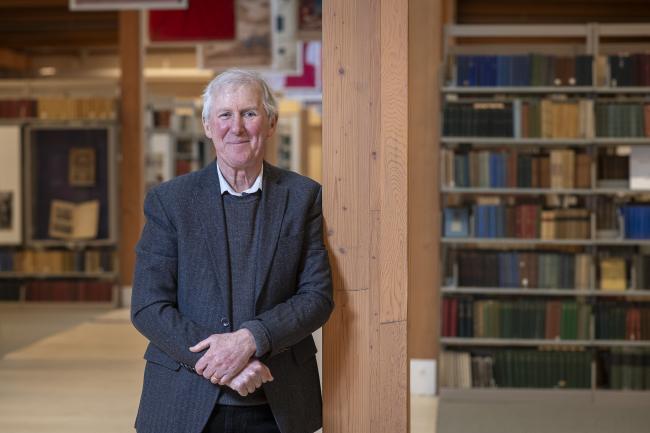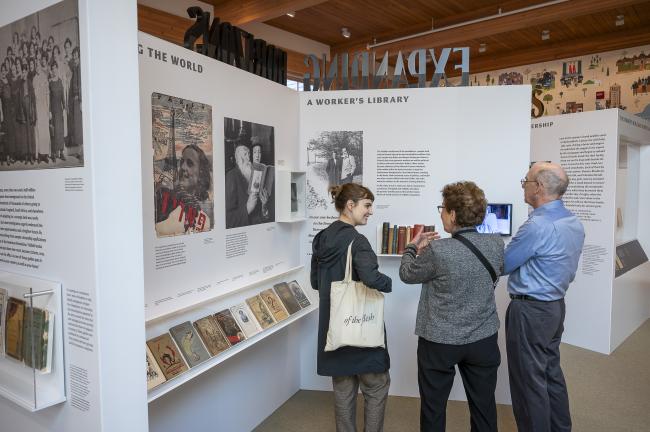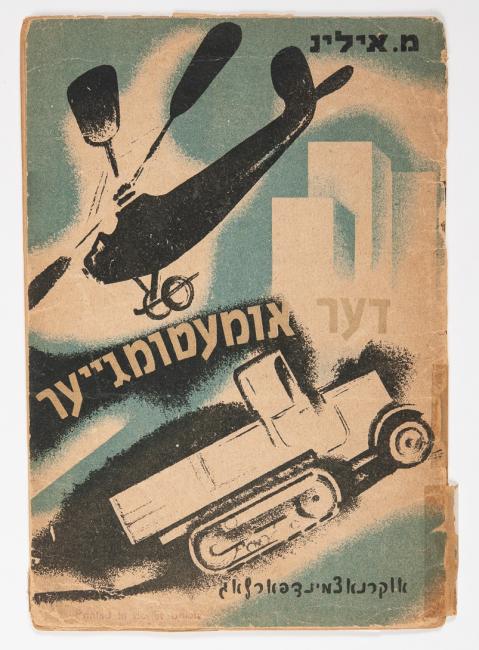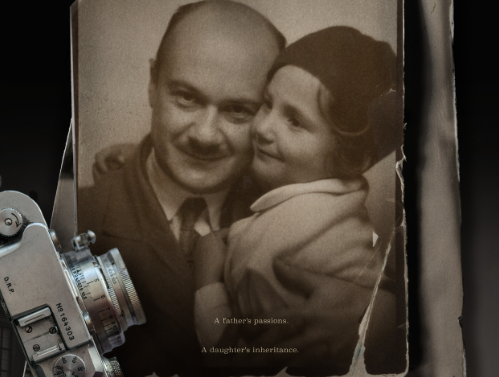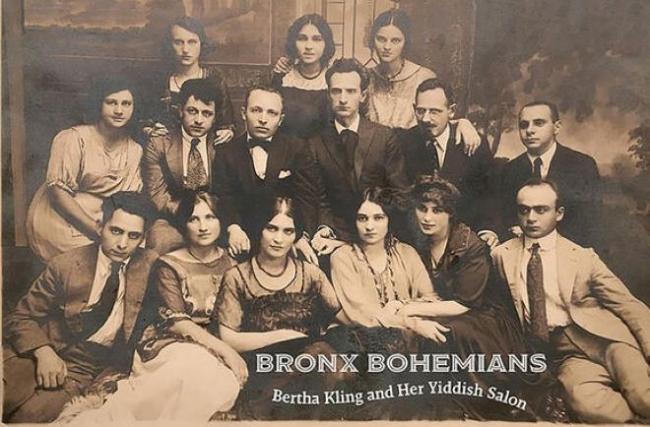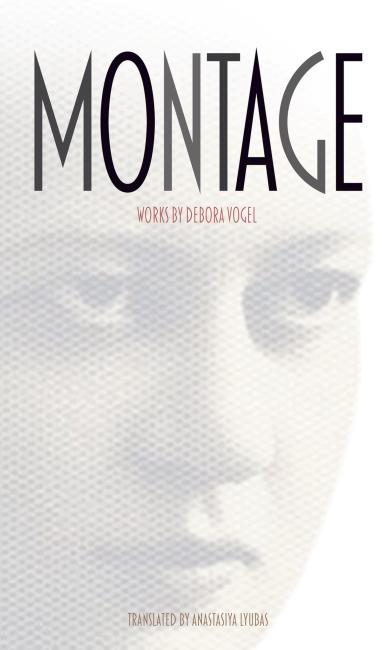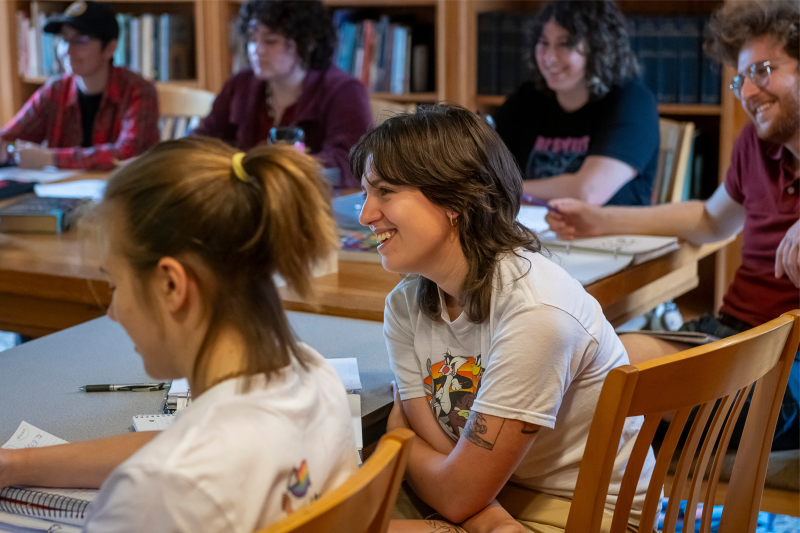
Yiddish Book Center
Celebrating Yiddish Language & Culture
Scroll down
פֿרישע נײַעס Now
Aaron Lansky, founder and president of the Yiddish Book Center, announces retirement
ON VIEW | Yiddish: A Global Culture
From the Vault | The Machine That Goes Everywhere, by Caleb Sher
UP NEXT | FILM SCREENING | Vishniac Sunday, April 21 @ 2:00 p.m. ET, at the Yiddish Book Center
The Shmooze | in a dark blue night: two song cycles on Yiddish/Jewish New York
Donor Profile: Elizabeth Short, MD and Michael Friedman, MD
Support Yiddish Culture!
Your donation will help safeguard our books and support Yiddish literature and culture for future generations.
Focus On Celebrating National Poetry Month with Yiddish
It’s April, and you know what that means. If you were about to say “the cruelest month,” as T. S. Eliot put it in The Waste Land, you’re close. April is National Poetry Month! For many of us, however, poetry isn’t always the easiest thing to read, even in our native tongue. (Here’s looking at you, Eliot.) The language can be difficult, and the content can be both allusive and elusive. Which makes reading poetry in a second language, as Yiddish often is, all the more difficult. Fortunately, we have not only many translations of Yiddish poetry but side-by-side translations as well, which can help readers appreciate the poems as fully as possible. Here are some great examples of Yiddish poetry from our collections, with English alongside.
אויסגעקליבן Handpicked Elizabeth Cardaropoli

Each month, the Yiddish Book Center asks a member of our staff or a friend to select favorite stories, books, interviews, or articles from our online collections. This month, we’re excited to share with you picks by Elizabeth Cardaropoli, the Yiddish Book Center’s Associate Director of Visitor Services and Public Programs Manager
Leonard Nimoy’s Oral History
As a Star Trek fan with a personal history as a theatre artist, it seemed most appropriate to make mention of our moving oral history interview with the late, great Leonard Nimoy. I enjoy his rendition of Hamlet’s “To be or not to be,” but what I find most poignant was his description of the Boston West End neighborhood of his youth (now lost to urban renewal projects) and his relationship to his parents and grandparents within that community that defined his connection to his Jewish heritage, the Yiddish language, and ultimately his life as an actor.
Diary of a Squirrel
I am an animal lover, and it seems author and translator Sonye (Sonya/Sonia) Kantor was as well. She wrote and translated exclusively children’s animal stories in the 1920s. Her 1920 story Togbukh fun a veverke (Diary of a Squirrel) is a captivating tale that documents the seasonal changes in a year in the life of a squirrel in interwar Poland. Her work imagines the inner life of this little creature and how he relates to the world around him. I, too, wonder quite a bit about what my cat is thinking or about the lives of the squirrels in the tree outside my front door.
Who Is Guilty? Radiocast
Sarah B. Smith was a newspaper journalist and crime writer for Der tog (The Day), where she profiled the goings-on in New York City’s courtrooms through her series Ṿer iz shuldig? (Who Is Guilty?), which was compiled into a book in 1919. Over a hundred years later, I found myself producing a radiocast version of selections of this episodic series. Smith’s searing yet sympathetic voice distilled the hardships and hurdles of New Yorkers during the most desperate moments of their lives as they faced judgment and justice in the crowded courtrooms of the early 20th century. Ever present, raw, and realistic, her stories resonate with our curiosities in the chaos of the human experience.
Shakespeare and Yiddish
Before my career shifted into history and museum work, I was trained as a classical performer. From a young age, I adored performing Shakespeare: his poetry is kinetic, and his characters are at once so human and larger than life. Shakespeare means many different things for many different people: from “prolific” to “problematic,” from an eyeroll-inducing checkpoint on their reading syllabus to the greatest of English poets. However, the Bard of Avon has endured for over 400 years, and he found his way into the world of Yiddish theater. Ilan Stavans’ intriguing and informative talk reflects on how Shakespeare was used a “litmus test” in Yiddish theater for performers and translators cutting their teeth in show business and how Shakespeare was translated for the Yiddish stage.
Stay up to Date!
Sign up to receive Yiddish Book Center news, podcasts, features, and oral histories right to your inbox.

